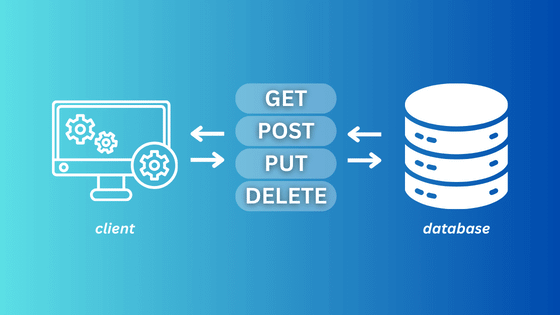
Imagine the internet as a huge city. Every app, website, and service is like a busy shop, constantly sending and receiving packages of information. But how do all these digital “shops” know how to talk to each other? That’s where REST comes in.
REST, short for Representational State Transfer, isn’t just another tech buzzword. It’s a powerful architectural style that shapes how data moves across the internet. From sending messages to loading your favorite playlist, REST makes it possible for apps and servers to “talk” to each other in a way that’s fast, reliable, and scalable.
In this article, we’ll break down what REST is, how it works, and why it’s become the standard for building scalable and efficient web services. Let's started!
What Is REST?
In simple terms, REST is a set of principles that dictate how HTTP and URLs Web standards are used. By adhering to REST principles, you can create applications that leverage the Web's architecture to your advantage.
Over the years, numerous methods have been developed to connect computers through a network using a common language. Each method or protocol addresses communication uniquely. For example, SOAP, JMS, and XML-RPC. SOAP requires large amounts of data and high computing capacity, making it unsuitable for limited mobile app resources. JMS facilitates formal communication, mainly used in Java applications, while XML-RPC has similar issues to SOAP. These older protocols are favored by Java developers but can be cumbersome to use.
In contrast, REST transmits only the necessary amount of data through the same mechanism that the web uses. It avoids the problems that come with more complex protocols, enabling developers to create applications that can handle variable network speeds and limited computing capacity.
REST API Methods
REST functions similarly to how a website interacts with a browser. The resource is made accessible through a URL, and the program accesses that URL to retrieve the data. The two main terms to understand are resources and representations. Resources are the "things" you want to talk about, and representations refer to the "entities" you want to send.

Resources are located at specific addresses, where computers can send or receive information. The HTTP methods GET and POST are typically used for this purpose. REST also supports other HTTP methods like PUT, DELETE, OPTIONS, HEAD, TRACE, and CONNECT, though GET and POST are the most important.
GET retrieves any kind of representation a resource may offer. POST creates a resource by storing information controlled by the server and assigning a unique value or URL in the database.
The terms “safe” and “idempotent” are also significant in REST. A “safe” HTTP method means that the resource state remains unchanged on the server. For example, GET is always safe. POST, however, is not always safe when used for creating resources, but it is considered safe when used to send messages.
The term “idempotent” means that a request can be made multiple times without changing the result. GET is always idempotent, while POST, generally used for creating or modifying resources, is not.
Benefits of REST
Using REST architecture for web apps offers the following advantages:
- Resource-based: REST enhances reliability, performance, and scalability by focusing on statelessness through resources.
- Simple interface: REST provides a uniform response for all transactions, making it easier to interact with.
- Familiar constructs: REST uses constructs familiar to anyone using HTTP, such as operations and URIs.
- Communication: REST communication uses HTTP status codes, like 400 (bad request), 404 (not found), 200 (success), and 500 (internal server error), making it easy to detect errors and monitor API performance.
- Language-independent: Because REST APIs use HTTP, developers can work with them without being tied to a specific programming language.
- Widespread use: REST is widely adopted, meaning many server- and client-side applications use it.
Drawbacks of REST
REST also comes with its drawbacks, including:
- Design limitations: REST has restrictions related to multiple requests over a single TCP connection and large HTTP request headers, which can slow down page loading. Additionally, the flexibility of REST APIs can sometimes make them challenging to manage.
- Stateless applications: REST does not store state information between request-response cycles, which complicates updates that don’t involve client-side polling.
- Definition: REST lacks a single reference implementation, making it difficult to measure whether a design is truly RESTful.
- Data overfetching/underfetching: RESTful services may return large volumes of unnecessary data, causing delays in data retrieval.
Example of a REST API
API2Cart is a modern REST API that enables seamless connection between multiple eCommerce platforms and business applications, such as inventory management, ERP, and shipping software. It supports over 60 eCommerce platforms, including Shopify, Magento, and WooCommerce. API2Cart simplifies product catalog, order, and customer management, saving developers time by integrating various platform APIs into a unified solution.

It also includes over 100 API methods to work with store data such as products, orders, customers, shipments, categories, and more.
Here is the request structure of product.add method:
{
"name": "Bag",
"model": "bag_01",
"description": "Product description",
"price": 99.9,
"status": "disabled",
"categories_ids": "23,56",
"is_virtual": false,
"available_for_view": true,
"available_for_sale": true,
"old_price": 99.9,
"special_price": 56.9,
"cost_price": 65.9,
"quantity": 0,
"manage_stock": false,
"warehouse_id": "1",
"backorder_status": "true",
"weight": 0,
"weight_unit": "lb",
"barcode": "9770317847001",
"harmonized_system_code": "123456",
"country_of_origin": "123456",
"manufacturer": "Samsung",
"search_keywords": "key1,key2,key3",
"tags": "tag1,tag2",
"meta_title": "category,test",
"meta_description": "category,test",
"seo_url": "some seo url",
"taxable": true
}
Here is the response structure of product.list method:
{
"return_code": 0,
"return_message": "string",
"pagination": {
"previous": "string",
"next": "string",
"additional_fields": {},
"custom_fields": {}
},
"result": {
"products_count": 0,
"product": [
{
"id": "string",
"type": "string",
"u_model": "string",
"u_sku": "string",
"name": "string",
"description": "string",
"short_description": "string",
"price": 0,
"advanced_price": [
{
"id": "string",
"value": 0,
"avail": true,
"group_id": "string",
"quantity_from": 0,
"start_time": {
"value": "string",
"format": "string",
"additional_fields": {},
"custom_fields": {}
},
"expire_time": {
"value": "string",
"format": "string",
"additional_fields": {},
"custom_fields": {}
},
"additional_fields": {},
"custom_fields": {}
}
],
"cost_price": 0,
"quantity": 0,
"inventory": [
{
"warehouse_id": "string",
"quantity": 0,
"in_stock": true,
"priority": 0,
"additional_fields": {},
"custom_fields": {}
}
],
"group_items": [
{
"child_item_id": "string",
"product_id": "string",
"default_qty_in_pack": "string",
"is_qty_in_pack_fixed": true,
"price": 0,
"additional_fields": {},
"custom_fields": {}
}
],
"u_brand_id": "string",
"u_brand": "string",
"categories_ids": [
"string"
],
"stores_ids": [
"string"
],
"url": "string",
"seo_url": "string",
"meta_title": "string",
"meta_keywords": "string",
"meta_description": "string",
"avail_sale": true,
"avail_view": true,
"is_virtual": true,
"is_downloadable": true,
"weight": 0,
"weight_unit": "string",
"sort_order": 0,
"in_stock": true,
"on_sale": true,
"backorders": "string",
"manage_stock": "string",
"is_stock_managed": true,
"create_at": {
"value": "string",
"format": "string",
"additional_fields": {},
"custom_fields": {}
},
"modified_at": {
"value": "string",
"format": "string",
"additional_fields": {},
"custom_fields": {}
},
"tax_class_id": "string",
"special_price": {
"value": 0,
"avail": true,
"created_at": {
"value": "string",
"format": "string",
"additional_fields": {},
"custom_fields": {}
},
"modified_at": {
"value": "string",
"format": "string",
"additional_fields": {},
"custom_fields": {}
},
"expired_at": {
"value": "string",
"format": "string",
"additional_fields": {},
"custom_fields": {}
},
"additional_fields": {},
"custom_fields": {}
},
"tier_price": [
{
"qty": 0,
"price": 0,
"additional_fields": {},
"custom_fields": {}
}
],
"group_price": [
{
"id": "string",
"group_id": "string",
"price": 0,
"store_id": "string",
"quantity": 0,
"start_time": "string",
"expire_time": "string",
"additional_fields": {},
"custom_fields": {}
}
],
"images": [
{
"id": "string",
"http_path": "string",
"file_name": "string",
"mime-type": "string",
"size": 0,
"create_at": {
"value": "string",
"format": "string",
"additional_fields": {},
"custom_fields": {}
},
"modified_at": {
"value": "string",
"format": "string",
"additional_fields": {},
"custom_fields": {}
},
"alt": "string",
"avail": true,
"sort_order": 0,
"type": "string",
"additional_fields": {},
"custom_fields": {}
}
],
"product_options": [
{
"id": "string",
"product_option_id": "string",
"name": "string",
"description": "string",
"sort_order": 0,
"type": "string",
"required": true,
"available": true,
"used_in_combination": true,
"option_items": [
{
"id": "string",
"product_option_item_id": "string",
"name": "string",
"sort_order": 0,
"price": "string",
"weight": "string",
"quantity": 0,
"type_price": "string",
"sku": "string",
"is_default": true,
"additional_fields": {},
"custom_fields": {}
}
],
"additional_fields": {},
"custom_fields": {}
}
],
"u_upc": "string",
"u_mpn": "string",
"u_gtin": "string",
"u_isbn": "string",
"u_ean": "string",
"related_products_ids": [
"string"
],
"up_sell_products_ids": [
"string"
],
"cross_sell_products_ids": [
"string"
],
"dimensions_unit": "string",
"width": 0,
"height": 0,
"length": 0,
"discounts": [
{
"id": "string",
"name": "string",
"modifier_type": "string",
"value": 0,
"from_time": "string",
"to_time": "string",
"customer_group_ids": "string",
"sort_order": 0,
"additional_fields": {},
"custom_fields": {}
}
],
"additional_fields": {},
"custom_fields": {}
}
],
"additional_fields": {},
"custom_fields": {}
},
"additional_fields": {},
"custom_fields": {}
}
API2Cart follows RESTful architecture, offering ease of use for developers. It supports both JSON and XML data formats, catering to the needs of different programmers. API2Cart ensures secure communication with encryption and user authentication procedures. Additionally, API2Cart offers comprehensive API documentation and technical support to help developers integrate and fine-tune their applications.
Conclusion
In conclusion, REST is a simple yet powerful architecture that enhances web functionality. It is beneficial for developers looking to optimize their applications' API and integrate them seamlessly into the web.
At API2Cart, we use REST API to ensure transparent data interaction. All methods are clearly documented to ensure ease of use. For more information, feel free to contact our Support Manager for further assistance.



